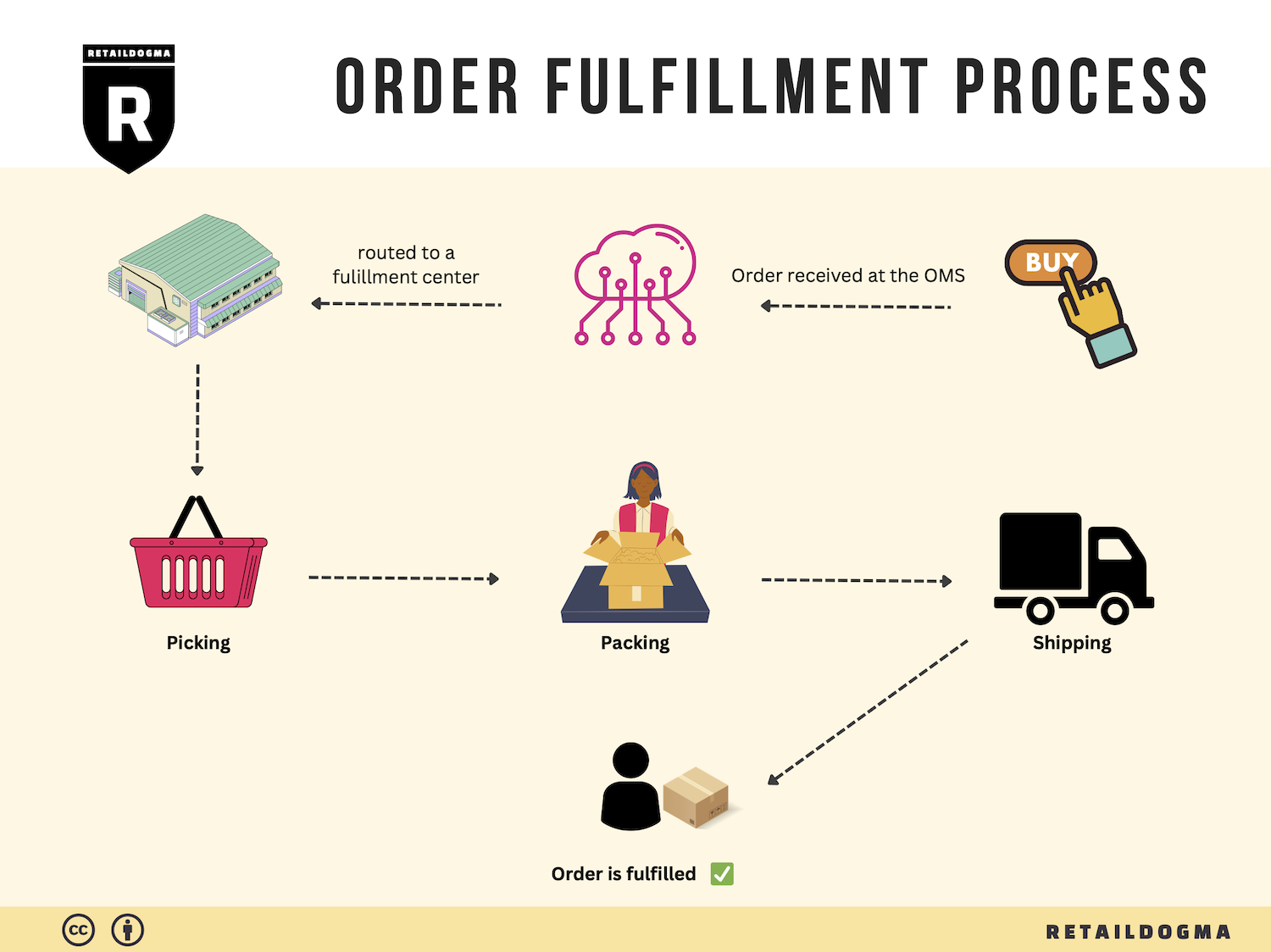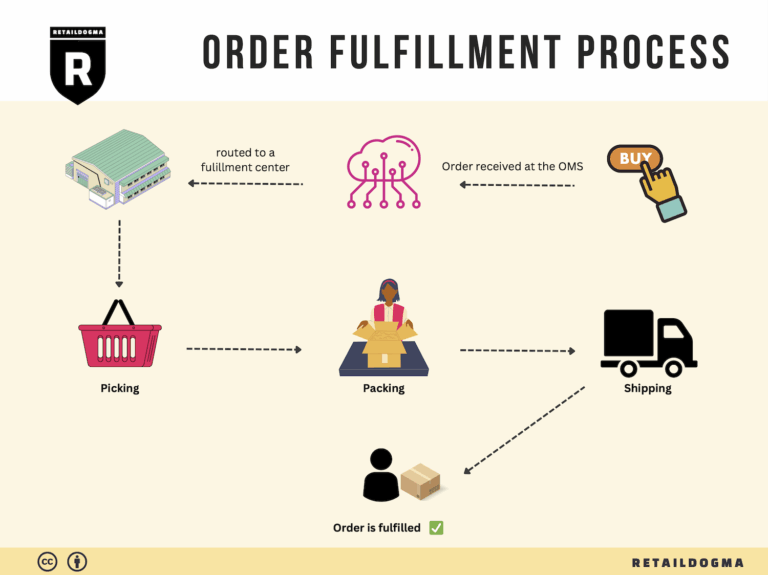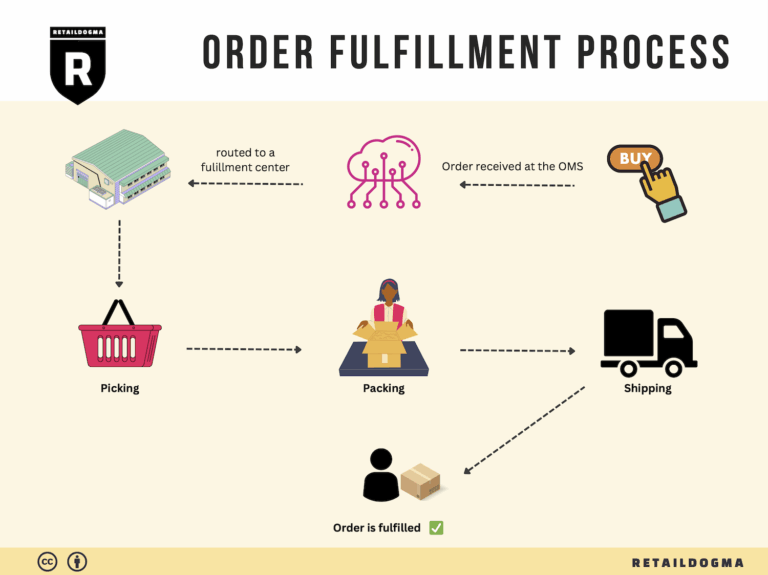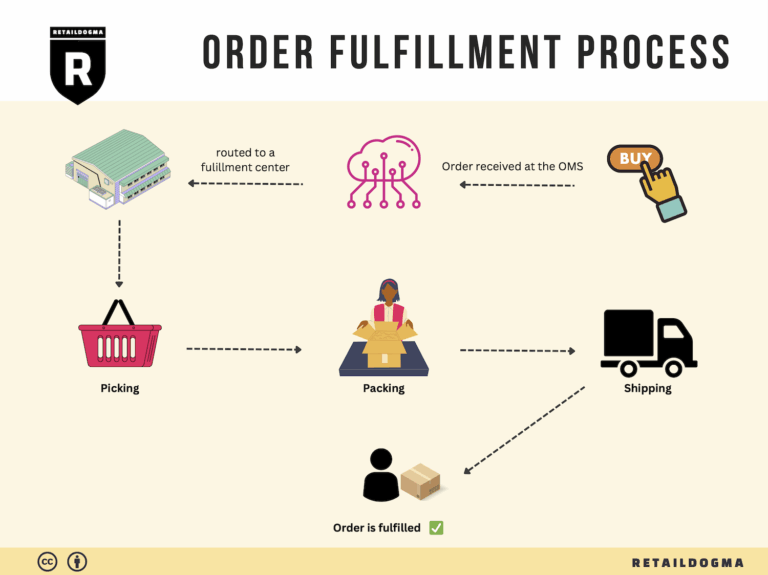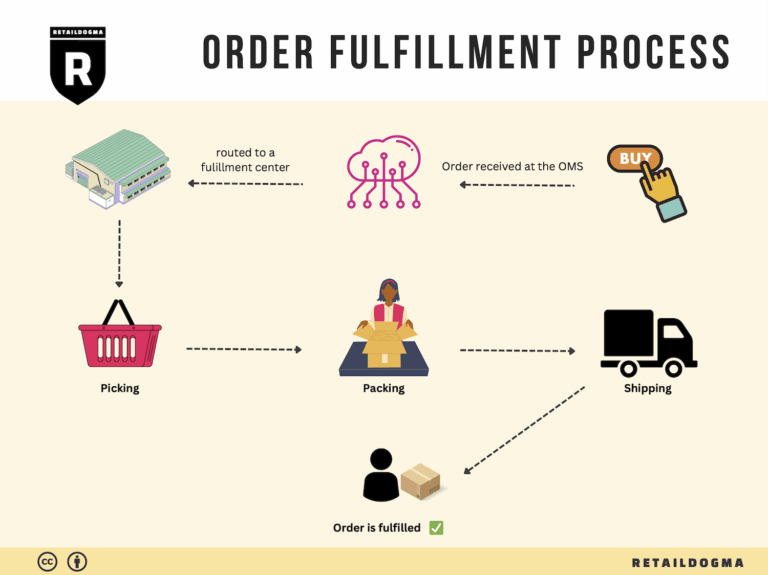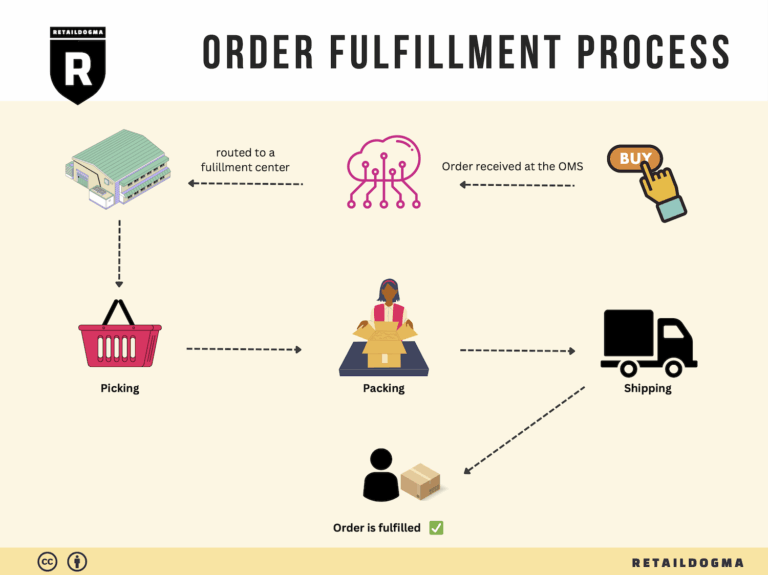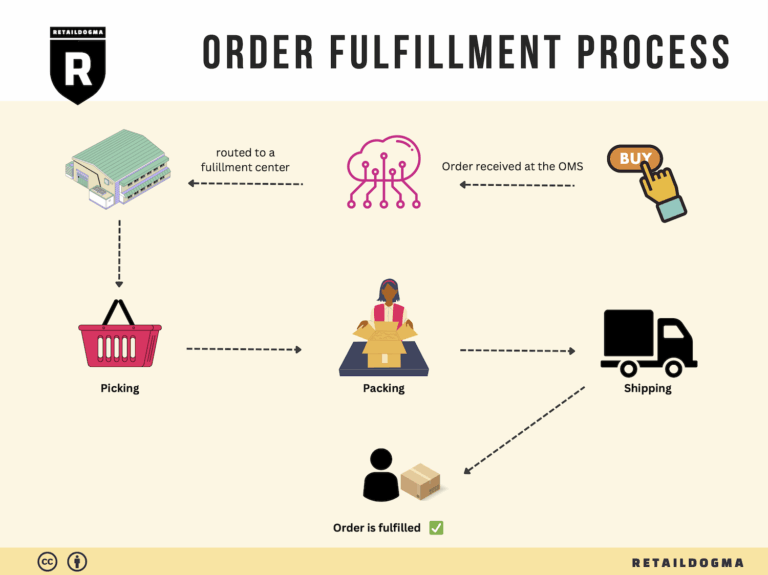What Is A Fulfillment Center? A Complete Guide (2025)
What is E-commerce Fulfillment? An Introduction for Growing Businesses
Understanding E-commerce Fulfillment: A Critical Component for Growth
As an e-commerce business owner, you may find yourself increasingly overwhelmed with the demands of packing and shipping orders. The excitement of growing sales can quickly turn into stress when faced with the logistics of fulfilling those orders efficiently. E-commerce fulfillment is the backbone of your operations, encompassing the entire process of getting products from your warehouse to your customers’ doorsteps.
In simple terms, fulfillment is the method by which you deliver your products to your customers after they make a purchase. It involves inventory management, order processing, packing, shipping, and handling returns. As your business scales, mastering these processes becomes crucial to maintaining customer satisfaction and brand reputation.
This guide aims to demystify e-commerce fulfillment and provide actionable insights for growing businesses. We will explore various fulfillment models, including Third-Party Logistics (3PL) and Fulfillment by Amazon (FBA), to help you understand which option might best suit your operational needs. Each model has its own advantages and challenges, and recognizing these can empower you to make informed choices.
Additionally, we’ll outline core fulfillment services that are essential for smooth operations, such as pick, pack, and ship, returns processing, and inventory management. Understanding these services will enable you to streamline your processes and improve efficiency.
Choosing the right fulfillment partner is another critical aspect that this guide will cover. Factors like technology integration, shipping capabilities, and customer service can significantly impact your fulfillment experience. We will provide a framework to evaluate potential partners, ensuring they align with your business goals and customer expectations.
Finally, we will discuss pricing structures associated with various fulfillment models. Understanding these costs is vital for budgeting and ensuring that your logistics strategy remains profitable.
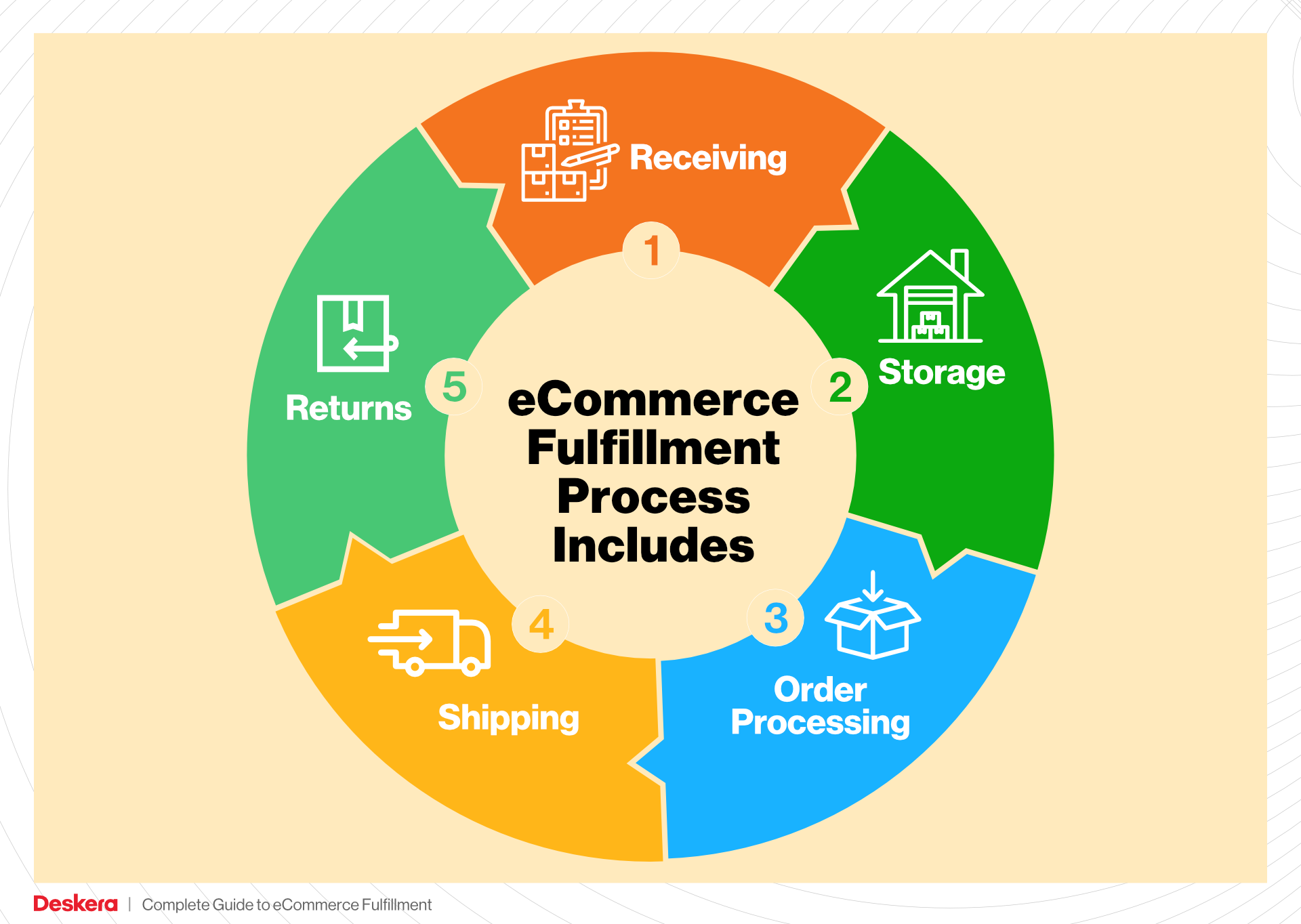
Our goal is to empower you, the business owner, with the knowledge necessary to make smart decisions about your logistics. With the right fulfillment strategy in place, you can focus on scaling your sales while ensuring that your customers receive their orders promptly and accurately. Let’s dive into the world of e-commerce fulfillment and unlock the potential for your business to thrive.
What You’ll Learn In This Guide
- What is E-commerce Fulfillment? An Introduction for Growing Businesses
- The Order Fulfillment Process: From ‘Buy’ Button to Customer’s Door
- Comparing Fulfillment Models: In-House vs. 3PL vs. Dropshipping
- A Deep Dive into Amazon FBA: Pros, Cons, and Who It’s For
- Core Services Offered by Fulfillment Centers
- How to Choose a Fulfillment Partner: A 6-Point Checklist
- Understanding Fulfillment Pricing: A Breakdown of Common Fees
- Frequently Asked Questions (FAQs) about Fulfillment
- Conclusion: Is Outsourcing Fulfillment the Right Move for Your Business?
- Important Disclaimer
The Order Fulfillment Process: From ‘Buy’ Button to Customer’s Door
1. Receiving Inventory
The order fulfillment process begins with receiving inventory. This step involves accepting products from suppliers and ensuring they match the purchase orders in terms of quantity and quality. It is crucial for maintaining accurate inventory levels and preventing stock discrepancies.
Upon arrival, each item is typically scanned using a system that records its unique identifier, such as a Stock Keeping Unit (SKU). This key term refers to the distinct code assigned to each product, which facilitates tracking throughout the fulfillment process. Proper receiving procedures are essential not only for inventory accuracy but also for building a reliable foundation for subsequent steps in the order fulfillment journey.
2. Warehouse Storage
Once the inventory is received, it moves to the warehouse storage phase. Here, products are organized and stored in designated locations within the warehouse. Efficient storage solutions are vital for maximizing space utilization and ensuring easy access to items when orders are placed.
This step often involves categorizing products into various zones based on their type, size, or sales velocity. Using a Warehouse Management System (WMS) can streamline this process by providing real-time visibility into stock levels and locations. By optimizing warehouse storage, businesses can reduce the time and effort required for order picking, ultimately enhancing overall efficiency.
3. Order Picking
The next step is order picking, where items are selected from their storage locations to fulfill customer orders. This is a critical stage as it directly impacts order accuracy and speed. When an order is placed, a pick list is generated, detailing the items needed to complete the order.
Pick lists can be organized in various ways—by order, by product location, or through batch picking, where multiple orders are picked simultaneously. This flexibility is essential for adapting to varying order volumes and types. Accurate picking not only satisfies customer expectations but also minimizes returns and increases operational efficiency.
4. Order Packing
Following the picking process, the next phase is order packing. This step involves carefully packaging the selected items to ensure they arrive at the customer’s doorstep in perfect condition. The packing process is crucial for protecting products during transit and enhancing the overall unboxing experience for customers.
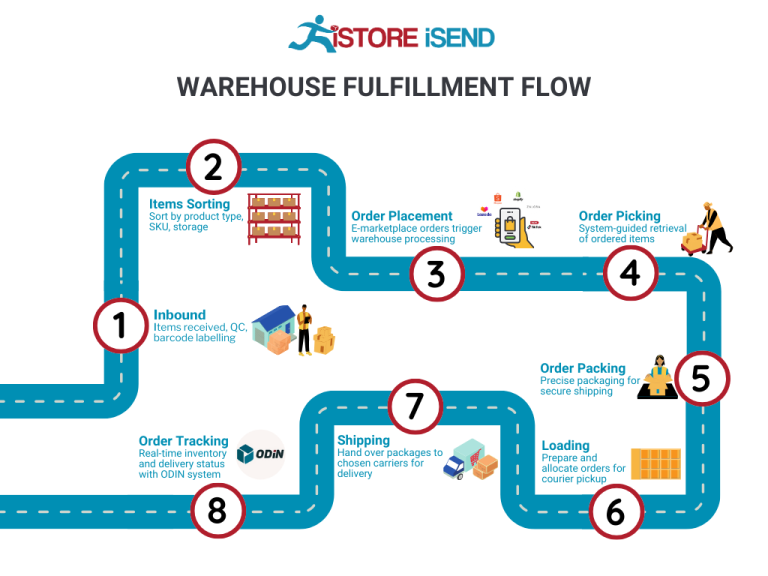
During packing, businesses must consider factors such as packaging materials, weight, and dimensions. Utilizing appropriate packing materials—like bubble wrap or foam—can prevent damage. Additionally, including branded elements like thank-you notes or promotional materials can enrich the customer experience. Effective packing can also optimize shipping costs by minimizing dimensional weight and ensuring compliance with carrier regulations.
5. Shipping & Delivery
The final step in the order fulfillment process is shipping and delivery. Once orders are packed, they are labeled and handed over to carriers for transportation to the customer. This phase is essential as it determines the speed and reliability of delivery, which are critical factors in customer satisfaction.
Businesses must choose the right shipping carriers based on factors such as cost, speed, and service reliability. Multi-carrier partnerships allow companies to compare rates and transit times, ensuring they provide the best options for their customers. Additionally, offering tracking information enhances transparency and builds trust with customers, allowing them to monitor their orders until they arrive at their doorsteps.
In conclusion, mastering the order fulfillment process is fundamental for e-commerce businesses seeking to scale effectively. By focusing on each step—from receiving inventory to shipping and delivery—companies can enhance operational efficiency, improve customer satisfaction, and ultimately protect their brand reputation in an increasingly competitive landscape.
Comparing Fulfillment Models: In-House vs. 3PL vs. Dropshipping
Fulfillment Model Comparison
| Model | Who Handles Inventory | Best For (Business Stage) | Key Advantage | Key Disadvantage |
|---|---|---|---|---|
| In-House Fulfillment | The Business Itself | Established businesses with stable sales | Full control over operations and branding | High overhead costs and resource-intensive |
| Third-Party Logistics (3PL) | External Logistics Provider | Growing businesses needing scalability | Flexibility, expertise, and cost-effectiveness | Less control over inventory and potential service issues |
| Dropshipping | Supplier/Manufacturer | Startups and small businesses | Low upfront investment and minimal risk | Lower profit margins and reliance on supplier reliability |
In-House Fulfillment
In-house fulfillment involves managing all aspects of order processing, inventory management, and shipping directly within your business. This model is ideal for established businesses that have stable sales and the necessary resources to maintain their own warehouse and logistics operations. The key advantage of in-house fulfillment is the complete control it provides over operations, allowing companies to manage their brand image, customer experience, and operational processes without relying on external partners. Businesses can customize their fulfillment processes, ensuring that every aspect aligns with their brand standards. However, this model comes with significant disadvantages, including high overhead costs related to warehousing, staffing, and technology. As a business scales, these costs can become burdensome, and maintaining efficiency may require continuous investment in systems and personnel.
Third-Party Logistics (3PL)
Third-party logistics (3PL) providers offer a comprehensive solution for businesses looking to outsource their fulfillment processes. This model is particularly beneficial for growing businesses that need to scale operations without the burden of managing logistics in-house. 3PLs handle inventory storage, order processing, shipping, and sometimes even returns management, allowing companies to focus on core competencies such as marketing and product development. A significant advantage of partnering with a 3PL is the flexibility and expertise they bring, often leveraging advanced technology and a network of carriers to optimize shipping costs and delivery times. However, businesses may face challenges related to reduced control over inventory and potential service inconsistencies, which could impact customer satisfaction. It’s essential for businesses to choose a reputable 3PL partner that aligns with their operational needs and brand values to mitigate these risks.
Dropshipping
Dropshipping is a fulfillment model where the retailer does not keep products in stock but instead transfers customer orders directly to a manufacturer or wholesaler, who then ships the products directly to the customer. This model is particularly suitable for startups and small businesses looking to enter the e-commerce space with minimal upfront investment. The primary advantage of dropshipping is the low risk associated with inventory management, as retailers only pay for products after they have sold them. This allows entrepreneurs to test new products and markets without significant financial commitment. However, dropshipping also comes with drawbacks, including lower profit margins due to reliance on suppliers and potential issues with product quality and shipping times. Retailers must also be prepared for the challenges of managing customer service and returns, as they have limited control over the fulfillment process. Successful dropshipping requires careful selection of reliable suppliers and a robust strategy for marketing and customer engagement.
A Deep Dive into Amazon FBA: Pros, Cons, and Who It’s For
Understanding Fulfillment by Amazon (FBA)
Fulfillment by Amazon (FBA) is a service offered by Amazon that allows sellers to store their products in Amazon’s fulfillment centers. When a customer orders a product, Amazon takes care of storage, packaging, shipping, and even customer service on behalf of the seller. This service is particularly beneficial for e-commerce businesses looking to scale without the overhead of managing their own logistics.
How FBA Works
-
Product Listing: Sellers create product listings on Amazon and opt into the FBA program. They can choose which products they want to fulfill through Amazon.
-
Inventory Shipment: Sellers send their inventory to Amazon’s fulfillment centers. Amazon has multiple centers located across the globe, allowing for efficient distribution.
-
Storage and Management: Once the products arrive at Amazon, they are stored in the fulfillment centers. Amazon manages the inventory, keeping track of stock levels and alerting sellers when they need to restock.
-
Order Fulfillment: When a customer orders a product, Amazon picks, packs, and ships the product. They handle all logistics, including tracking and delivery.
-
Customer Service: Amazon also provides customer service for FBA orders, handling returns and inquiries, which can save sellers valuable time and resources.
-
Payment: After a sale, Amazon collects payment from the customer and pays the seller, minus FBA fees.
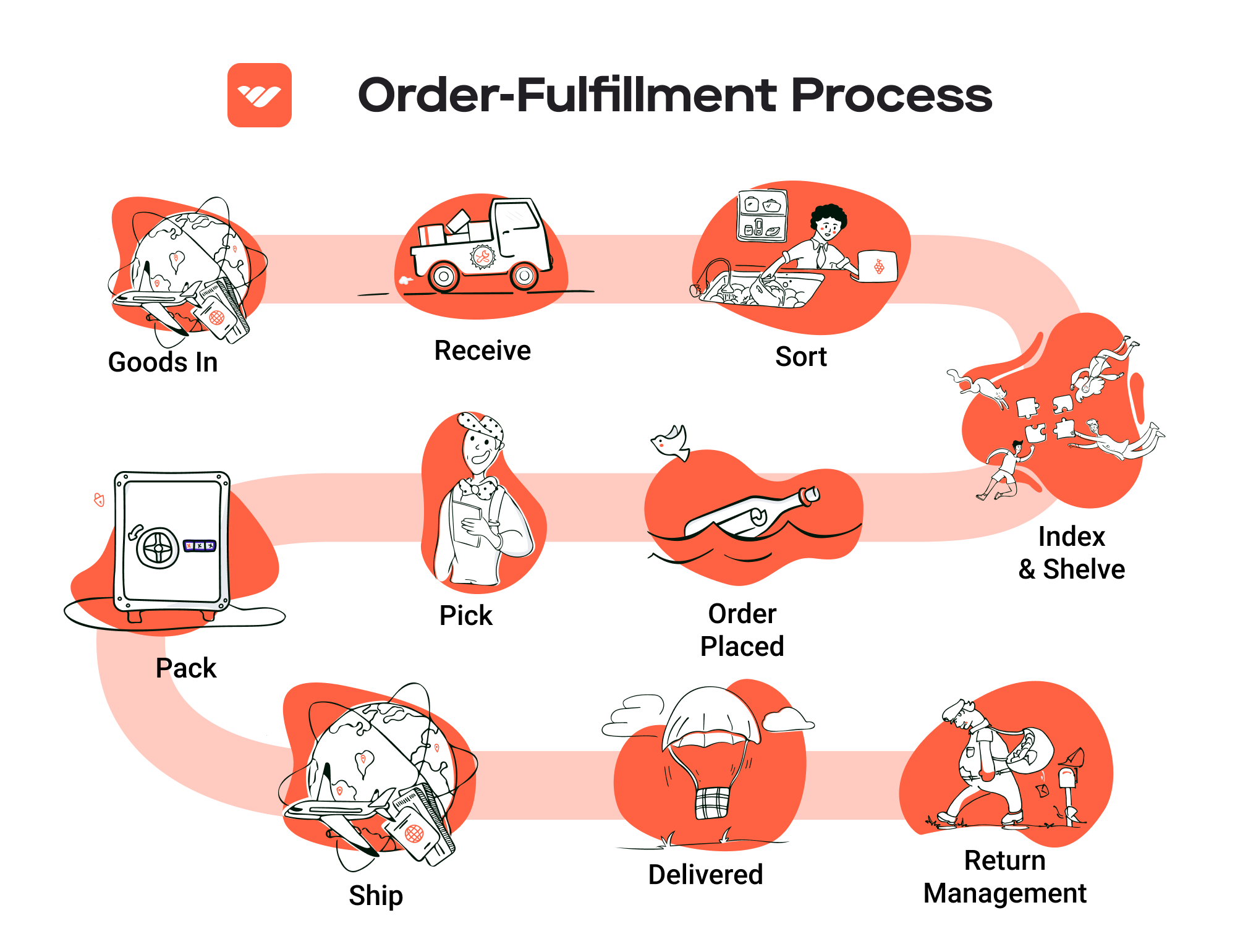
Pros of Using FBA
Prime Eligibility
One of the most significant advantages of FBA is that products fulfilled by Amazon become eligible for Amazon Prime. This means that Prime members can enjoy free two-day shipping on eligible products, increasing the likelihood of sales. Prime customers tend to have higher spending habits and prefer products that offer fast shipping, making FBA a valuable tool for sellers.
Customer Trust
Amazon is a trusted brand, and customers often feel more comfortable purchasing items that are fulfilled by Amazon. FBA products are backed by Amazon’s customer service and return policies, which can enhance the perceived value and reliability of the products. This trust can lead to increased sales and better conversion rates.
Multi-Channel Fulfillment
FBA is not limited to sales through Amazon alone. Sellers can also use FBA for orders placed on their own websites or other marketplaces. This multi-channel fulfillment capability means that sellers can leverage Amazon’s logistics network while still maintaining their brand identity across different platforms.
Cons of Using FBA
High Fees
While FBA provides numerous benefits, it comes with high fees that can eat into profit margins. Sellers are charged for storage space and fulfillment services, and these costs can add up, particularly for products that do not sell quickly. It’s essential for sellers to factor in these fees when pricing their products to ensure profitability.
Strict Inventory Rules
Amazon has strict inventory management guidelines that sellers must adhere to. This includes limitations on how much inventory can be stored at any given time and requirements for labeling and packaging. Non-compliance can lead to additional fees or even the removal of inventory from Amazon’s fulfillment centers.
Commingling Risks
FBA uses a system of commingling inventory, where products from multiple sellers are stored together. This can lead to risks such as receiving the wrong item or issues with counterfeit products. Sellers must be diligent in monitoring their inventory and may need to invest in additional quality control measures to mitigate these risks.
Who is FBA Best For?
Fulfillment by Amazon is ideal for businesses that meet certain criteria:
-
High Volume Sellers: Businesses that have a steady flow of sales can benefit from the economies of scale provided by FBA, making the fees more manageable.
-
New Sellers: New entrepreneurs entering the e-commerce space can leverage Amazon’s established infrastructure to launch their products without needing to invest heavily in logistics.
-
Brands Seeking Exposure: Brands that want to increase visibility and trust can benefit from Amazon’s marketplace, particularly if they have products that align well with consumer demand.
-
Multi-Channel Retailers: Businesses that sell across various platforms and want to streamline their fulfillment processes will find FBA advantageous.
In conclusion, while Fulfillment by Amazon offers significant advantages such as Prime eligibility, customer trust, and multi-channel fulfillment capabilities, it’s essential to carefully consider the associated costs and requirements. Sellers must weigh these factors based on their business model, sales volume, and long-term strategy to determine if FBA aligns with their growth objectives.
Core Services Offered by Fulfillment Centers
Inventory Management & Warehousing
Inventory management and warehousing are the foundational elements of any fulfillment center’s operation. This service encompasses the systematic control of stock levels, ensuring that products are available to meet customer demand without overstocking. Fulfillment centers utilize advanced Warehouse Management Systems (WMS) to track inventory in real time, providing e-commerce businesses with up-to-date insights into stock levels, order statuses, and replenishment needs.
Benefits:
1. Optimized Stock Levels: With real-time inventory tracking, e-commerce businesses can avoid stockouts and overstock situations, leading to improved cash flow and reduced holding costs.
2. Enhanced Order Fulfillment Speed: Strategically placed inventory across multiple warehouses can significantly decrease shipping times, allowing businesses to meet customer expectations for rapid delivery.
3. Data-Driven Insights: Comprehensive reporting and analytics help businesses make informed decisions regarding purchasing and inventory turnover, ultimately improving operational efficiency.
Pick and Pack Services
Pick and pack services are critical to the order fulfillment process. This service involves selecting items from the warehouse (picking) and preparing them for shipment (packing). Fulfillment centers employ trained staff and automated systems to ensure accuracy and efficiency in this process. Each order is carefully picked according to specific customer requirements and then packed securely to minimize damage during transit.
Benefits:
1. Accuracy and Efficiency: By utilizing barcoding and automated systems, fulfillment centers significantly reduce the chances of picking errors, ensuring that customers receive the correct items.
2. Scalability: As e-commerce businesses grow, their order volumes can fluctuate. Fulfillment centers can easily scale their pick and pack operations to accommodate peak seasons or promotional events without compromising service quality.
3. Brand Representation: Professional packing not only ensures product safety but also reflects a brand’s commitment to quality. Custom packaging options, including branded boxes or inserts, enhance the customer experience and reinforce brand loyalty.
Kitting and Assembly
Kitting and assembly refer to the process of grouping individual items into a single package or creating ready-to-sell products by assembling various components. This service is especially beneficial for e-commerce businesses that offer subscription boxes, promotional bundles, or products that require assembly before shipping. Fulfillment centers can manage these complex tasks efficiently, ensuring that all components are included and correctly assembled.
Benefits:
1. Increased Sales Opportunities: Kitting allows businesses to create attractive product bundles that encourage customers to purchase more items at once, thus increasing average order value.
2. Time Savings: Outsourcing kitting and assembly to fulfillment centers frees up valuable internal resources, allowing businesses to focus on core activities such as marketing and product development.
3. Consistency and Quality Control: Fulfillment centers implement strict quality control measures during the kitting process, ensuring that every package meets the required standards before it reaches the customer.
Returns Management (Reverse Logistics)
Returns management, or reverse logistics, is a vital service that handles product returns efficiently and effectively. Given the growing importance of customer satisfaction in e-commerce, having a robust returns process is essential for maintaining a positive brand image. Fulfillment centers manage the entire returns process, from receiving returned items to restocking them or processing refunds.
Benefits:
1. Streamlined Returns Process: By centralizing returns management, fulfillment centers can process returns quickly, minimizing the impact on customer satisfaction and freeing up valuable time for e-commerce businesses.
2. Data Insights on Returns: Analyzing return data can provide valuable insights into product quality and customer preferences, enabling businesses to make informed decisions about inventory and product offerings.
3. Enhanced Customer Experience: A hassle-free returns process increases customer trust and loyalty, making it more likely that they will shop with the brand again. Offering easy returns can differentiate a business in a competitive e-commerce landscape.
In summary, partnering with a capable fulfillment center can significantly enhance an e-commerce business’s operational efficiency and customer satisfaction. By leveraging services such as inventory management, pick and pack, kitting, and returns management, businesses can scale effectively while maintaining a strong brand reputation.
How to Choose a Fulfillment Partner: A 6-Point Checklist
Location & Warehouse Network
Importance: The geographical location of your fulfillment partner’s warehouses significantly impacts shipping times and costs. A partner with strategically located warehouses can reduce shipping zones, leading to faster delivery and lower shipping expenses.
Questions to Ask:
– Where are your warehouses located, and how does that align with our primary customer demographics?
– Can you provide insights into your shipping capabilities (e.g., next-day delivery, regional coverage)?
– How do you handle international shipping and customs clearance?
Technology & Integrations
Importance: In today’s fast-paced e-commerce environment, advanced technology is crucial for efficient operations. A fulfillment partner should have robust systems for inventory management, order processing, and reporting. Seamless integration with your existing e-commerce platform (like Shopify, Amazon, or WooCommerce) is essential for real-time data synchronization and visibility.
Questions to Ask:
– What warehouse management system (WMS) and order management system (OMS) do you use, and how do they integrate with our e-commerce platform?
– Can your systems provide real-time inventory tracking and reporting?
– How do you handle updates to order statuses and tracking information?
Specializations (e.g., Cold Storage, Oversized Items)
Importance: Depending on your product types, you may require specialized services. Whether it’s temperature-controlled storage for perishables or handling oversized items, ensuring your fulfillment partner has the necessary capabilities is vital.
Questions to Ask:
– What specific services do you offer for our product category (e.g., cold storage, kitting, or returns processing)?
– How do you manage inventory for specialized items, and what protocols are in place for quality control?
– Can you accommodate seasonal spikes in demand for specialized products?
Scalability & Capacity
Importance: As your business grows, your fulfillment needs will evolve. A partner should not only meet your current demands but also have the capacity to scale operations efficiently. This flexibility is crucial during peak seasons or unexpected surges in demand.
Questions to Ask:
– How do you handle fluctuations in order volume?
– What is your capacity for scaling operations, and do you have a plan in place for peak seasons?
– Are there any limitations on inventory storage or order fulfillment that we should be aware of?
Pricing and Contracts
Importance: Understanding pricing structures and contract terms is essential for maintaining profitability. Look for transparency in pricing and flexibility in contract terms, as rigid agreements can hinder growth.
Questions to Ask:
– Can you provide a detailed breakdown of your pricing model (e.g., per-order fees, storage fees, additional services)?
– What are the terms of your contracts, and is there flexibility to renegotiate based on our growth?
– Are there any hidden fees or minimum order requirements we should be aware of?
Customer Support & Reviews
Importance: Exceptional customer support is crucial for resolving issues quickly and maintaining a positive customer experience. Additionally, reviews and testimonials can provide insights into the reliability and reputation of the fulfillment partner.
Questions to Ask:
– What customer support options do you provide (e.g., dedicated account managers, 24/7 support)?
– How do you handle issues related to order fulfillment errors or delays?
– Can you provide references or case studies from clients with similar needs and growth trajectories?
Conclusion
Choosing the right fulfillment partner is a pivotal decision for any e-commerce business. By following this checklist and asking the right questions, you can ensure that your chosen partner aligns with your operational needs and growth aspirations. A strong partnership will not only enhance your logistics capabilities but also contribute to a positive customer experience, ultimately driving your business forward.
Understanding Fulfillment Pricing: A Breakdown of Common Fees
Initial Setup Fees
Initial setup fees are one-time charges that cover the costs associated with onboarding a new client. These fees can vary widely depending on the complexity of the fulfillment operation and the specific requirements of your business. Typically, setup fees may include the integration of your e-commerce platform with the fulfillment provider’s systems, configuration of inventory management software, and training for your staff on how to use the new systems.
Calculating these fees often involves assessing the scope of work required, including the number of SKUs, the complexity of your product catalog, and the level of customization needed for your fulfillment process. It’s crucial to ask for a detailed breakdown of these costs upfront to ensure there are no hidden charges.
Receiving Fees
Receiving fees are charged when inventory is delivered to the fulfillment center. This fee typically covers the labor and resources needed to unload shipments, inspect goods, and update inventory records.
Receiving fees can be calculated based on the volume of inventory received, often measured in units or pallets. Some fulfillment centers may also impose additional charges for special handling of items that require extra care or specific storage conditions. To manage these costs effectively, consider scheduling shipments during off-peak hours to potentially negotiate lower rates and ensure timely processing.
Storage Fees (per pallet/bin)
Storage fees are incurred for the space your inventory occupies within the fulfillment center. These fees are typically calculated on a monthly basis, either per pallet or per bin, depending on how your inventory is stored.
The calculation of storage fees can vary based on factors such as the type of products being stored (e.g., bulky items may require more space) and the duration of storage. Additionally, some fulfillment providers may offer tiered pricing based on the amount of space occupied, so it’s wise to understand how your inventory turnover rates will impact these costs.
To optimize storage fees, maintain an efficient inventory management system that helps you forecast demand accurately, thereby minimizing the amount of excess stock held at the fulfillment center.
Pick & Pack Fees (per item/order)
Pick and pack fees are charged for the process of selecting items from inventory and preparing them for shipment. This fee can be calculated per item or per order, depending on the fulfillment provider’s pricing structure.
The complexity of the pick and pack process can influence these fees. For instance, orders that require special handling, custom packaging, or multiple SKUs may incur higher charges. Additionally, fulfillment centers often have tiered pricing based on order volume, meaning larger orders might benefit from reduced per-item costs.
To mitigate pick and pack fees, consider streamlining your product offerings and ensuring that your inventory is organized effectively. This not only speeds up the picking process but also reduces the likelihood of errors, which can lead to additional costs in returns and customer service.
Shipping Fees
Shipping fees are typically the most variable and significant cost associated with fulfillment services. These fees can be influenced by several factors, including the shipping method chosen (standard, expedited, etc.), the weight and dimensions of the package, and the shipping destination.
Fulfillment providers may offer different shipping rates based on their partnerships with carriers. A good practice is to work with a fulfillment center that has established relationships with multiple carriers, allowing for cost-effective routing options based on your shipping needs.
When negotiating shipping fees, consider the volume of shipments you anticipate, as higher volumes can lead to better rates. Additionally, you can explore options such as flat-rate shipping or regional distribution centers to reduce costs further.
Tips for Getting an Accurate Quote
-
Provide Detailed Information: When requesting a quote, be as detailed as possible regarding your inventory, order volume, and specific fulfillment needs. This transparency will help the provider give you a more accurate estimate.
-
Ask About Hidden Fees: Inquire about any potential additional fees that may arise during the fulfillment process, such as return processing fees or charges for special handling.
-
Request a Breakdown of Costs: Ensure that the quote includes a detailed breakdown of all fees associated with setup, receiving, storage, picking, packing, and shipping. This will help you understand how costs are structured and identify areas where you can save.
-
Negotiate Terms: Don’t hesitate to negotiate terms, especially if you plan to scale your operations. Some providers may offer discounts for long-term contracts or higher order volumes.
-
Evaluate the Total Cost of Ownership: Consider not just the immediate costs, but also the long-term implications of working with a specific fulfillment provider. Look for a partner that aligns with your business goals and can grow with you.
By understanding these common fulfillment pricing models and taking proactive steps to secure an accurate quote, you can effectively manage your fulfillment costs and support your e-commerce growth strategy.
Frequently Asked Questions (FAQs) about Fulfillment
1. What is Fosdick Fulfillment?
Fosdick Fulfillment is a leading provider of e-commerce fulfillment services, specializing in logistics solutions that cater to both direct-to-consumer and business-to-business needs. With nearly 60 years of experience, Fosdick offers a range of services, including pick, pack, and ship, subscription box fulfillment, returns processing, and inventory management, all designed to enhance customer experience and streamline operations for brands.
2. What is a fulfillment center?
A fulfillment center is a specialized facility that handles the logistics of receiving, processing, and delivering customer orders. Unlike traditional warehouses, which primarily store products, fulfillment centers are equipped to manage order picking, packing, shipping, and sometimes even returns. They play a critical role in the e-commerce supply chain by ensuring timely delivery and maintaining inventory accuracy.
3. What is a 3PL?
A 3PL, or third-party logistics provider, is a company that offers outsourced logistics services to businesses. These services can include warehousing, transportation, inventory management, and order fulfillment. By partnering with a 3PL like Fosdick Fulfillment, businesses can focus on their core operations while benefiting from expert logistics management and scalable solutions tailored to their needs.
4. How much do fulfillment services cost?
The cost of fulfillment services can vary widely based on several factors, including order volume, storage needs, packaging requirements, and the specific services utilized (e.g., kitting, returns processing). Generally, fulfillment costs may include storage fees, picking and packing fees, shipping costs, and any additional value-added services. To get a precise estimate, it’s best to request a customized quote from a fulfillment provider like Fosdick.
5. How does Fosdick Fulfillment ensure quality control?
Fosdick Fulfillment emphasizes quality control by implementing rigorous processes at every stage of the fulfillment operation. This includes detailed order verification, product inspection, and system checks to ensure accuracy in picking and packing. Additionally, their dedicated customer service team monitors feedback and addresses any issues promptly to maintain high service standards.
6. What types of businesses can benefit from Fosdick Fulfillment?
Fosdick Fulfillment caters to a wide array of businesses, from startups to established brands in various industries, including e-commerce, retail, and subscription services. Whether you sell cosmetics, pet products, or consumer electronics, Fosdick has the expertise and infrastructure to support your fulfillment needs and help you scale effectively.
7. What is the process for getting started with Fosdick Fulfillment?
Getting started with Fosdick Fulfillment involves a few key steps:
1. Initial Consultation: Discuss your business needs and fulfillment goals with their team.
2. Custom Quote: Receive a tailored quote based on your specific requirements.
3. Onboarding: Once you agree to the terms, you will go through the onboarding process, which includes integrating your systems with their technology for seamless order management.
4. Go Live: After setup, you can start sending inventory to their fulfillment centers and begin processing orders.
8. Can Fosdick Fulfillment handle returns?
Yes, Fosdick Fulfillment offers comprehensive returns processing services. They manage the entire returns cycle, from receiving returned items to inspecting them and restocking them as necessary. This service helps businesses maintain customer satisfaction and streamline their return logistics.
9. How does Fosdick Fulfillment support multi-channel selling?
Fosdick Fulfillment provides robust multi-channel support through advanced technology that integrates with various e-commerce platforms, including Shopify, Amazon, and Walmart Marketplace. This enables seamless order processing across channels, ensuring that inventory levels are synchronized and orders are fulfilled promptly, regardless of the sales platform.
10. What are the benefits of using Fosdick Fulfillment over in-house fulfillment?
Using Fosdick Fulfillment offers several advantages over in-house fulfillment:
– Scalability: Easily adjust to fluctuating order volumes without the overhead costs of maintaining a large warehouse or staff.
– Expertise: Leverage Fosdick’s decades of experience in logistics and fulfillment to enhance operational efficiency.
– Cost Savings: Benefit from economies of scale and optimized shipping rates through their partnerships with multiple carriers.
– Focus on Core Business: Free up your time and resources to concentrate on marketing, product development, and customer engagement rather than logistics management.
Conclusion: Is Outsourcing Fulfillment the Right Move for Your Business?
The Strategic Advantage of Outsourcing Fulfillment
Outsourcing your fulfillment operations can be a game changer for e-commerce businesses aiming to scale effectively. By partnering with a reputable fulfillment service, you can save invaluable time and resources that can be redirected towards growing your brand. Managing logistics in-house often leads to distractions from core business activities, whereas a dedicated fulfillment partner can streamline processes, allowing you to focus on strategic initiatives like marketing and product development.
Scalability is another significant benefit of outsourcing. As your business grows, so do the complexities of order management, inventory control, and shipping logistics. A proficient fulfillment partner, like Fosdick Fulfillment, offers flexible solutions that can adapt to seasonal demand fluctuations and evolving market conditions. This adaptability is crucial in today’s fast-paced e-commerce landscape, where consumer expectations for speed and efficiency continue to rise.
Moreover, leveraging the expertise of a fulfillment service means you gain access to industry insights, advanced technology, and best practices that may be challenging to implement independently. Their knowledge in managing returns, optimizing shipping routes, and ensuring compliance with various retail platforms can enhance your operational efficiency and customer satisfaction.
However, the choice of a fulfillment partner is critical to your success. It’s essential to select a provider that aligns with your business goals, understands your brand’s unique needs, and has a proven track record of reliability and performance.
To determine if outsourcing fulfillment is the right next step for your business, conduct a thorough audit of your current shipping processes. Assess your pain points, evaluate your capacity to scale, and consider how a fulfillment partner could alleviate operational burdens. Taking this strategic step could position your business for sustainable growth in the competitive e-commerce landscape.
Important Disclaimer
⚠️ Important Disclaimer
The information in this guide is for educational purposes. Fulfillment services, pricing, and platform features change frequently. Always conduct your own due diligence and consult with providers directly before making business decisions.
